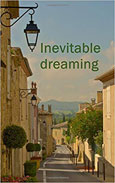
 |
Shrouded in grief from the loss of his wife Antoinette and young daughter Claire, Waldemar van Splunteren’s life is in shambles. Add in a suspension from his role as a university forensic psychologist that he is in the process of defending, and his slip from reality into the void that is alcohol and self-pity is justifiable. Nevertheless, Miriam, a family friend and Waldemar's coworker, is intent on pulling Waldemar from this spiral.
Aside from providing microscopic details, Dröge’s stellar character development with Waldemar is commendable. Waldemar is highly knowledgeable and seemingly a student of philosophy and cultures. From the Hindu scripture Upanishads, one conversation during his tribulations involves the concept of “eat or be eaten.” From Virginia Woolf to Vincent van Gogh, multiple references are cited to rationalize Waldemar’s own suicide ideation.
Perhaps the most intriguing portion of the novel is centered on Waldemar’s foray into 3D virtual reality therapy. Waldemar’s experience is resplendent with Valerie, his mental coach, dancers like Elle, Naomi, and Aphrodite, two parrots named Sjors and Sjimmie (who could arguably be representations of his wife and daughter), and idyllic nature scenes that help him better connect with his subconscious. At its core, this virtual reality therapy is meditation. In this part, audiences will get the calm, nirvana-driven aura exhibited in Siddhartha Gautama in conjunction with the magical realism element that might remind readers of Gabriel Garcia Marquez’ 100 Years of Solitude.
What ensues as Waldemar comes to grips with reality is a thrilling adventure—an investigation that culminates in Indonesia. In the process, Waldemar undergoes his own awakening and self-discovery, courtesy of the therapy and Miriam’s insistence. Dröge’s laser focus on Waldemar’s character evolution and the novel concept of 3D virtual reality therapy make this book a worthwhile read.